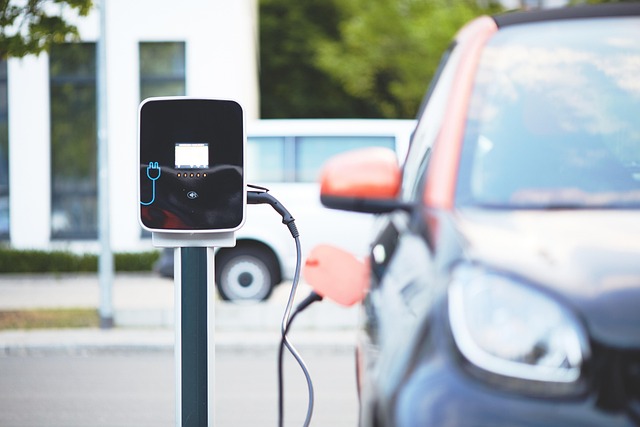Looking to register your car in California? This comprehensive guide will walk you through the process step-by-step. From understanding crucial registration requirements to gathering essential documents, this article has you covered. Learn how to verify your vehicle’s VIN and complete necessary inspections at your local DMV. Discover the fees involved and receive your license plate promptly. Optimize your car registration experience with our tips using a dmv vin verifier for a seamless process.
- Understand California Car Registration Requirements
- Gather Necessary Documents for Car Registration
- Visit Your Local DMV to Register Your Vehicle
- Verify VIN and Complete Inspection Process
- Pay Car Registration Fees and Receive License Plate
Understand California Car Registration Requirements

Before registering your car in California, it’s crucial to understand the state’s specific requirements. The California Department of Motor Vehicles (DMV) mandates that all vehicles operated within the state be properly registered and bear current license plates. This process involves verifying key information about your vehicle, including its unique Vehicle Identification Number (VIN).
A reliable method for this verification is through a DMV-approved VIN verifier, which can be conducted either online or at a local DMV office. For added convenience, many services now offer mobile vin inspection and mobile vin verification options, allowing you to complete the necessary steps from the comfort of your home or on the go. Ensuring your car meets these standards is not just a legal requirement but also demonstrates your commitment to safe and responsible vehicle ownership.
Gather Necessary Documents for Car Registration

Before you start the registration process, make sure to gather all the essential documents required by the California Department of Motor Vehicles (DMV). This includes your vehicle’s registration certificate from the previous state, a completed Application for Title and Registration form (Form MV-1), and proof of insurance. It is also crucial to have the Vehicle Identification Number (VIN) verifier ready, which can be done through a mobile VIN verifier or by checking the DMV’s online database.
Additionally, you’ll need to provide valid identification documents such as a driver’s license or state-issued ID card. If you’ve recently purchased the vehicle, ensure that you have the necessary bills of sale and any other relevant paperwork. For older vehicles, a historical vehicle registration or a letter from the previous owner may be required. Lastly, don’t forget to bring along the appropriate fees for processing your car registration.
Visit Your Local DMV to Register Your Vehicle

Visiting your local DMV is a crucial step in registering your vehicle in California. This process involves providing essential documents and ensuring your car meets all legal requirements. At the DMV, you’ll need to present proof of ownership, such as a bill of sale or previous registration, along with valid identification like a driver’s license or state ID card.
One convenient service to leverage during this visit is the DMV’s Vehicle Identification Number (VIN) verifier. This tool cross-references your car’s unique VIN with their database to verify its authenticity and history, including any reported accidents or outstanding issues. Alternatively, you can opt for a mobile VIN inspection or verification service, which provides similar functionality but from the comfort of your home or on the go.
Verify VIN and Complete Inspection Process

Before registering your car in California, it’s crucial to verify your Vehicle Identification Number (VIN) and complete a thorough inspection process. Start by using a DMV-approved VIN verifier to cross-reference the number with official databases. This step ensures that your vehicle matches all necessary records, preventing any potential fraud or discrepancies. Once you’ve confirmed the VIN, schedule or conduct a comprehensive vehicle inspection that covers safety features, emissions standards, and overall condition.
A mobile vin verification service or even a local shop offering a vin inspection can aid in this process by providing detailed reports on your car’s history and identifying any potential red flags. Keep in mind that California has specific regulations regarding vehicle registration, so adhering to these guidelines is essential for a smooth and successful registration experience.
Pay Car Registration Fees and Receive License Plate

After completing your vehicle’s registration application at the California DMV (Department of Motor Vehicles), it’s time to pay the associated fees. These include the registration fee, vehicle license fee, and possibly other taxes or surcharges, depending on your vehicle type and usage. You can typically pay these fees online, over the phone, or in person at a DMV office. Once your payment is processed, you’ll receive your license plates. These plates are assigned to your vehicle and must be displayed on the front and rear of your car for legal driving.
To streamline this process, consider using a DMV VIN verifier or mobile VIN verification service. These services can help ensure that your vehicle’s information is accurate and up-to-date before you visit the DMV. A vin inspection performed through one of these platforms can save time and avoid potential delays during registration. With a valid VIN (Vehicle Identification Number), you’ll be well on your way to registering your car quickly and efficiently in California.
Registering a car in California is a straightforward process that requires understanding specific requirements and gathering essential documents. By visiting your local DMV, verifying your vehicle’s VIN, and completing necessary inspections, you’ll be on your way to securing license plates for your new or transferred vehicle. Remember to keep your registration up-to-date and always carry your license plate as required by law. Utilize a dmv vin verifier to ensure a smooth process and peace of mind.
